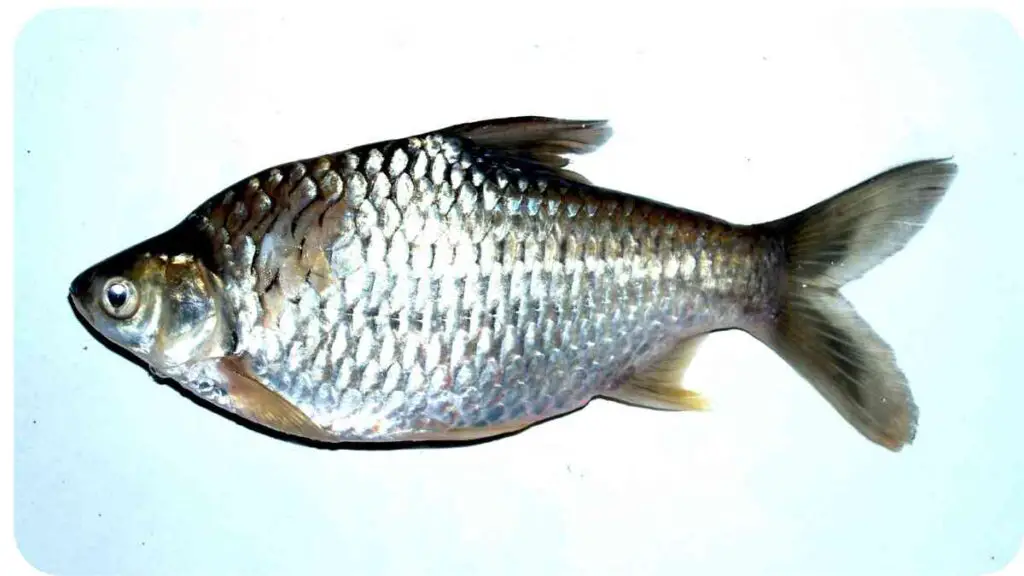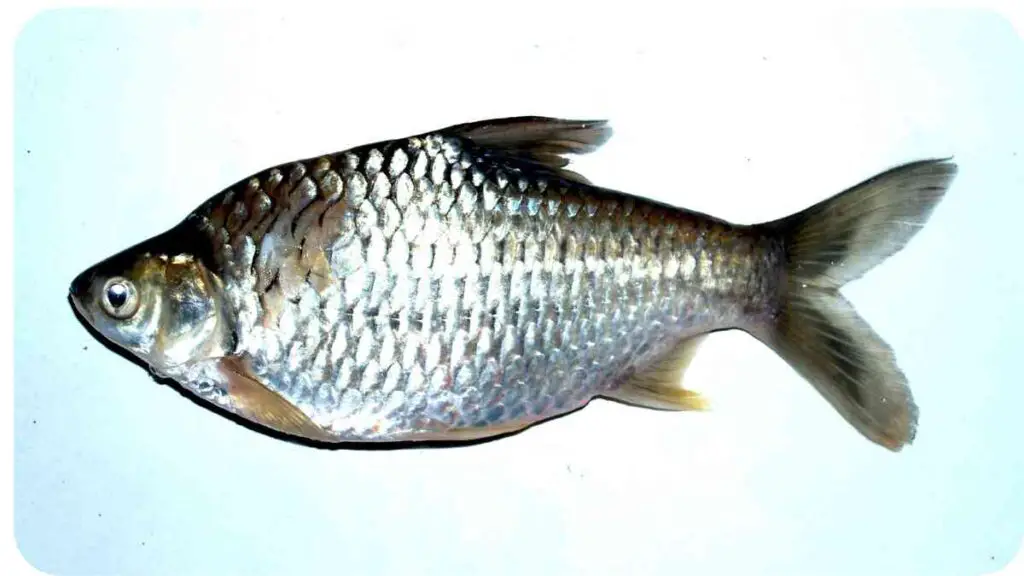Are you a seafood enthusiast curious about the mysteries of fish scales? Delve into our comprehensive guide that explores the world of fish scales, answering questions about their types, functions, and how to identify them.
Whether you’re a cooking aficionado, a fishing enthusiast, or just fascinated by aquatic life, this article aims to provide clarity on the presence or absence of scales in different fish species and their significance.
| Takeaway |
|---|
| Fish species can have variations in their skin, with some having scales and others having smooth skin. |
| The presence or absence of scales in fish can be influenced by various factors, including environmental adaptations and evolutionary traits. |
| Scales serve multiple purposes for fish, such as protection against predators, aiding in movement and buoyancy, and maintaining body temperature. |
| Some fish species have evolved alternative means of protection and movement, even without scales. |
| Understanding the types and functions of fish scales can provide insights into the biology and survival strategies of different fish species. |
Deciphering Fish Scales

Indeed, some fish possess scales on their skin and gills, while others exhibit scales exclusively on their skin.
Determining whether a fish has scales isn’t always straightforward; visual or tactile examination may not suffice.
A fish’s body development is intricately tied to its evolutionary journey and the environmental influences shaping its existence over time. Explore the nuanced world of fish coverings to comprehend the diverse ways these aquatic creatures adapt to their surroundings.
Discover the remarkable potential of fish skins in medical treatments. Learn how fish scales are being used on burn victims and their effectiveness. Dive into the world of fish skins used on burn victims and explore the innovative applications in modern medicine.
Sensing Fish Scales
Eager to discern if a fish boasts scales? Simply run your fingers along the fish’s underside. The presence of small, raised bumps indicates scales.
Conversely, a smooth surface signals a fish without scales. Master this tactile technique to unravel the mysteries of fish coverings with a touch.
Exploring Protective Scales and Their Functions
Fish employ scales as a defensive armor against predators, enhance their respiratory efficiency by increasing surface area, and minimize water resistance during swimming. These protective layers, akin to human nails and hair, are composed of keratin.
Scales come in two primary types: cycloid scales, resembling overlapping shingles on a roof, and ctenoid scales, fused into a single layer. Fish equipped with both varieties feature an outer epidermal layer, providing additional protection against diseases and injuries. Delve into the intricate world of fish scales and uncover the evolutionarily crafted shield that aids their survival.
| Fish Body Covering | Description |
|---|---|
| Scales | Fish scales are bony or horny plates that cover the skin of most fish species, providing protection and reducing friction in water. Examples include cycloid scales found in salmon and ctenoid scales found in bass. |
| Skin | Some fish have smooth skin without scales, relying on a slimy mucus layer for protection against parasites and pathogens. Eel and catfish are examples of fish with skin coverings. |
| Placoid Scales | Placoid scales are small, tooth-like structures found in cartilaginous fish such as sharks and rays. These scales have a rough texture and aid in hydrodynamics. |
| Armor Plating | Certain fish, like armored catfish and sturgeon, possess bony plates or scutes embedded in their skin, providing extra protection. These plates may be fused to form an armored shell. |
| Gelatinous Coating | Some deep-sea fish, like the blobfish, have gelatinous bodies that lack typical scales or hard structures. They possess a jelly-like substance that gives them a unique appearance. |
The table above provides an overview of various fish body coverings and characteristics, highlighting the diversity of fish adaptations for protection and survival.
Discerning Fish Scales by Observation

Though scales may be small, keen observation allows their detection. Examine the fish closely from a side angle or above to spot these subtle features.
In cases where scales remain elusive, shift your focus to another part of the fish’s body for comparison. This comparative analysis ensures a more accurate assessment, preventing optical illusions that might obscure the presence of scales. Sharpen your visual acuity to unlock the secrets hidden in the intricate patterns of a fish’s skin.
Are you curious about the environmental impact of fishing nets? Explore the consequences and learn more about the effects of fishing nets on marine ecosystems. Check out our article on the environmental impact of fishing nets to gain insights into this critical issue and understand the importance of sustainable fishing practices.
The Diversity of Aquatic Coverings
Contrary to common assumptions, not all ocean-dwellers, including fish, boast scales. Remarkably, species like eels and anglerfish navigate underwater realms without these protective layers. Beyond fish, intriguing creatures like jellyfish, squid, and octopuses defy convention by lacking hard structures such as skin or bones.
Embark on a journey to explore the unique adaptations of these marine inhabitants, revealing the vast spectrum of aquatic coverings that go beyond the traditional notion of scales.
Decoding Fish Features
If you’re eyeing a fish and curious about scales, a close examination of its eyes and mouth provides valuable clues. If the fish lacks distinct scales, discerning this absence becomes a challenge, particularly without a closer inspection.
To unveil the scales mystery, a thorough examination is imperative. Get up close and personal, scrutinizing the body for visible bumps on the skin or underneath its surface.
For a deeper dive into the world of animal defense mechanisms, explore our article: “The Top 5 Ways Animals Protect Themselves From Predators And Threats In Nature!!!” and gain comprehensive insights into the strategies adopted by creatures to navigate the challenges of the wild.
| Indicator | Description |
|---|---|
| Eye Structure | Fish with scales often have distinct eye structures, such as a visible sclera (white part of the eye) and a well-defined iris, which can be observed when examining the fish closely. |
| Gills | Scaled fish typically have gills covered by a bony operculum, located on either side of the fish’s head. The presence of this operculum indicates the likelihood of scales on the fish’s body. |
| Mouth Shape | Fish with scales generally possess a well-defined mouth structure, with lips and jaws adapted for capturing and consuming prey. The presence of these distinct mouth features can suggest the presence of scales. |
| Skin Texture | Fish without scales, such as catfish or eels, often have smooth skin, lacking the rough texture typically associated with scaled fish. By observing the skin texture, one can infer the presence or absence of scales. |
| Scales Observation | To be certain if a fish has scales, direct observation of the fish’s body is necessary. Scales can be seen and felt on the fish’s skin, appearing as overlapping, bony or hard structures covering the body. |
The table above provides information on various indicators and physical features that can help determine if a fish has scales. While eye structure, gill presence, mouth shape, and skin texture can provide clues, the most definitive method is direct observation of the scales on the fish’s body.
Understanding the Absence of Fish Scales

To grasp the implications of a fish lacking scales, let’s delve into the essence of these protective coverings and distinguish them from other body coverings.
Scales, composed of keratin akin to hair, are embedded in the skin and overlap, creating the distinctive pattern observed in fish. While prevalent in fish, reptiles, amphibians, and birds, scales are notably absent in mammals, replaced by hair.
So, if you encounter a creature without scales, especially if it’s not a fish, it’s a noteworthy distinction. However, if those tiny bumps adorn its skin, it’s time to explore more than just its covering—perhaps delving into culinary expertise for your next delectable meal.
Are you relying on fishing apps for accurate and up-to-date information? Discover the pros and cons of fishing apps and their reliability. Learn more about the effectiveness of fishing apps in our comprehensive guide on the accuracy of fishing apps and make informed decisions for your next fishing expedition.
Mastering the Art of Scaling Fish
When it comes to removing scales from a fish, several methods can achieve desired results. If the fish is alive, employing a knife or scaler facilitates scale removal, although caution is paramount to avoid injuring the fish.
However, if the fish has already met its demise, handling it with care or avoiding manipulation altogether is advisable.
Exercise caution and precision when using a scaler or knife, ensuring the safety and well-being of both the fish and yourself. Remember, improper handling can lead to unintended harm, so proceed with diligence and respect for the creature in your culinary endeavor.
Have you ever wondered if fish are always in motion? Uncover the truth about the swimming behavior of fish and their moments of rest. Explore our article on whether fish are always swimming to gain insights into the fascinating lives of these aquatic creatures and their unique habits.
Unveiling the Nature of Fish Scales
Affirmative! Fish scales are indeed a manifestation of hardened skin, crafted from the same substance as human hair and fingernails: keratin.
These scales, multifaceted in their functionality, play a crucial role in the lives of aquatic creatures. Primarily, they act as a formidable shield, safeguarding species like salmon and eels from potential predators.
Moreover, fish leverage their scales to optimize swimming performance, enhancing speed and efficiency by manipulating drag around their bodies.
Beyond protection and speed, scales offer an additional benefit—they provide insulation. This insulation proves vital for certain fish species, aiding them in maintaining warmth during colder seasons. Appreciate the intricacies of fish scales, where form meets function in the underwater realm.
| Fish Scale Composition | Description |
|---|---|
| Ganoid Scales | Ganoid scales, found in certain primitive fish species like gar and sturgeon, are composed of an enamel-like substance called ganoin, making them extremely hard and durable. |
| Cycloid and Ctenoid Scales | Cycloid and ctenoid scales, common in most bony fish, consist of a thin layer of bone covered by a layer of enamel-like material. They provide flexibility while offering protection to the underlying skin. |
| Placoid Scales | Placoid scales, characteristic of cartilaginous fish like sharks and rays, are small tooth-like structures made of dentin, covered by a tough outer layer of enamel-like substance called vitrodentine. |
| Cosmoid Scales | Cosmoid scales, found in ancient fish species like lungfish, have a bony core with a layer of cosmine, an enamel-like substance, on the outer surface. These scales provide excellent protection. |
| Skin versus Scales | While fish scales are structurally different from regular skin, they are derived from the same embryonic tissue. Scales are specialized structures that develop and harden to provide protection and support to fish. |
The table above provides insights into the composition and nature of different types of fish scales, highlighting their unique properties and distinguishing features.
Choosing the right fishing bait is essential for a successful fishing trip. Dive into the world of fishing bait and explore the different types and their effectiveness. Check out our article on the benefits of fishing bait to discover the secrets of selecting the perfect bait to lure in your prized catch.
Conclusion
And there you have it! A journey through the realm of fish scales, unraveling their significance, origins, and importance in aquatic life. With this newfound knowledge, you’re equipped with a deeper understanding of the intricate world beneath the water’s surface.
Interestingly, the connection extends beyond aquatic life. Consider this: the skin covering your body consists of minuscule scales known as “epidermal cells.” So, the next time you glance at your hands or feet, envision the fascinating parallel tiny fish scales, an often overlooked yet integral part of the biological tapestry connecting us to the underwater wonders.
Further Reading
- Why Do Some Fish Not Have Scales?: Explore the reasons behind why certain fish species lack scales and the biological adaptations that contribute to this phenomenon.
- Why Do Fish Have Scales?: Delve into the purpose and importance of scales in fish, understanding their evolutionary significance, and the benefits they provide to aquatic life.
- Understanding Fish Scales: Gain a comprehensive understanding of fish scales, their types, functions, and the various ways they contribute to the survival and behavior of fish.
FAQs
Why do some fish not have scales?
Certain fish species have evolved to have smooth skin without scales due to specific environmental or evolutionary factors. The absence of scales in these fish can offer advantages such as enhanced agility or the ability to live in different habitats.
What is the purpose of fish scales?
Fish scales serve multiple purposes, including protection from predators, reducing friction in the water, aiding in buoyancy, facilitating movement, and providing a barrier against parasites and pathogens.
How do fish scales contribute to their survival?
Fish scales provide a protective layer that helps fish withstand physical damage, defend against predators, regulate body temperature, and maintain the osmotic balance of their bodies in aquatic environments.
Do all fish have scales?
No, not all fish have scales. Some fish species, such as catfish and eels, have smooth skin without scales. These species have adapted alternative means of protection and movement.
What are the different types of fish scales?
Fish scales can vary in shape, size, and structure. Common types of fish scales include placoid scales (found in sharks and rays), cosmoid scales (found in lungfish), ganoid scales (found in gars and sturgeons), and cycloid/ctenoid scales (found in most bony fish).

Hellen James is an outdoor enthusiast, writer, and hiker. She loves to explore the world around her by immersing herself in nature and visiting new places.


